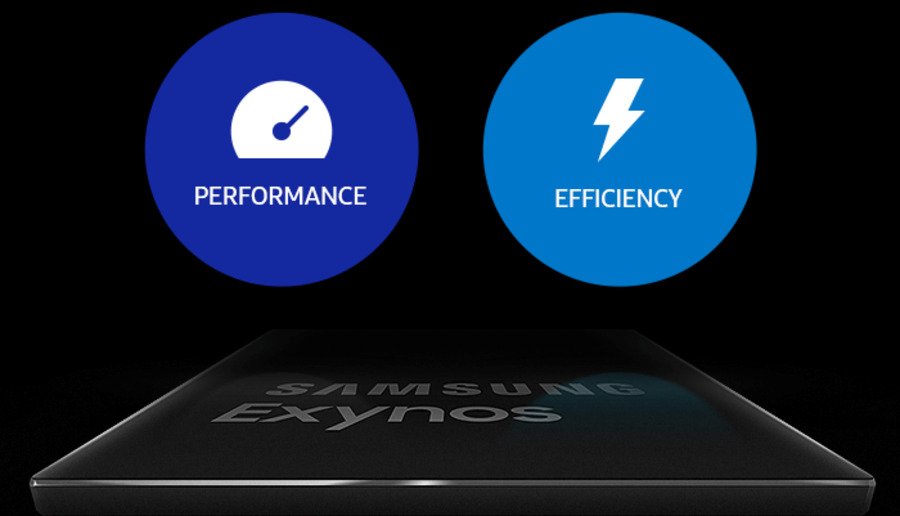NOTICE: We’ve created an archive of all major developments related to the Samsung Galaxy S10 lineup. We are continuously updating that page with latest S10e/S10/S10+ news so that you don’t need to search for information related to the device on daily basis. Head here to access that page.
In the world of PC building, users have literally two options when it comes to the CPU. Intel used to the big brother with countless SKUs and a significantly large user base. But AMD attracted quite a few major spotlights in recent years on the basis of the Zen architecture based processor lineup.
Benchmarks and performance comparisons between these brands often lead to inconclusive results. It is almost impossible to pick one and mark it as optimum, due to the sheer amount of factors (single core versus multi core performance, cost, long term support etc.) involved.

The situation is little bit different in the world of smartphones or tablets. We have seen Intel x86 platform fueled Android devices before, and some of them were actually sold well (example: 2015’s Asus Zenfone 2 series). However, majority of smartphones are powered by ARM processors.
The ARM architecture belongs to RISC (Reduced Instruction Set Computing) family of processors, and thus it is optimized for light, portable and battery-powered devices. A company named Arm Holdings designs the architecture and license holders such as Qualcomm and Samsung develops the system-on-chips (SoC).

Unlike PCs, smartphone users are not capable to assemble the processor and other components and build a modular phone. They have to rely on the phone makers and their policies.
That’s the reason why US and Canadian users get Qualcomm Snapdragon variant of Samsung Galaxy S10, whereas other countries get the model powered with Samsung’s own Exynos SoC.

While the international Exynos S10 model has some advantages like faster software updates, unlockable bootloader, dual SIM support etc., it is constantly lagging behind the Snapdragon variant in terms of raw CPU performance.
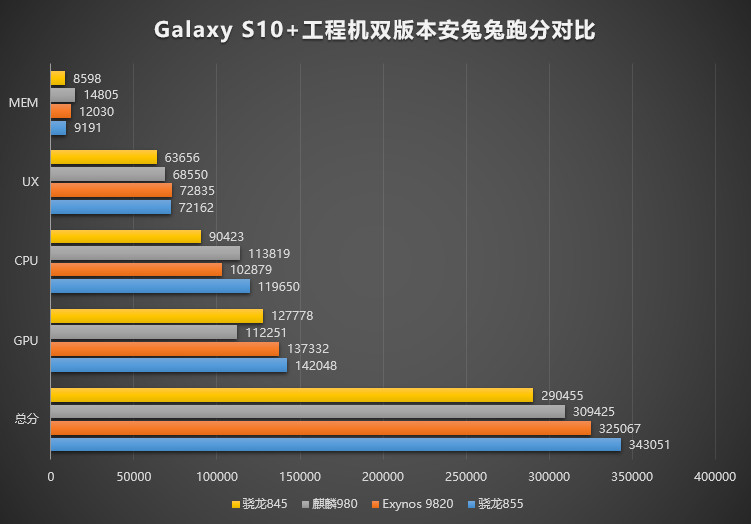
FYI, Qualcomm SD855 is made using 7 nm fabrication method while Exynos 9820 is 8 nm product. This adds a significant boost in the energy efficiency of the Snapdragon Galaxy S10 variant, which can be seen be seen from multiple synthetic benchmark reports.
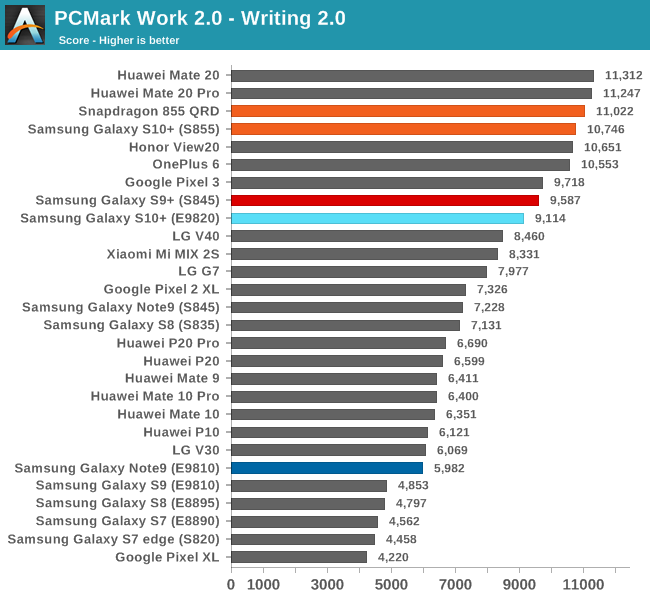
The energy efficiency of the SoC is directly proportional to the battery usage. Users will get more battery juice if the SoC can intelligently utilize its power while catering the workload.
To prove this theoretical proposition, YouTuber PhoneBuff took two regular Samsung Galaxy S10 units (one Snapdragon 855, one Exynos 9820) and did a thorough battery drainage test.
The tests were completely automated without any human intervention. Even the touches were simulated by robotic arms to maintain the authenticity of the controlled environments.
The test itself consists of 1-hour simulated sessions in a variety of apps ranging from the phone and messaging to web browsing and navigation. Complete with a 16-hour standby test, our battery test offers the most comprehensive look into a smartphone’s battery life.
TL;DR of the test: the Qualcomm variant won (kinda expected) with almost an extra hour of SoT against the Exynos laden unit. Although the per app battery usage were mostly similar, the Exynos model lost due to the high idle battery drain.
Global Galaxy S10e/S10/S10 Plus users should be familiar with the idle battery drain since the release. In fact, we were one of the first tech publications to analyze the user reports and report about the buggy sleep mode and high CPU utilization on these phones.
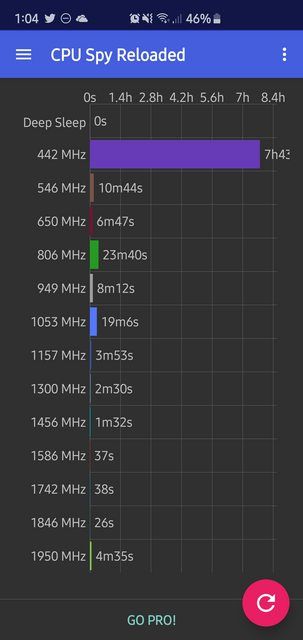
Samsung tried to address the bug with March security update (build ASC8), which reportedly solved the deep sleep bug. Their engineers also patched a number of battery drain related issues in April update (build ASD5/ASD6).

According to PhoneBuff, both of the phones were on March security patch level as the test was performed before the arrival of the April OTA update.
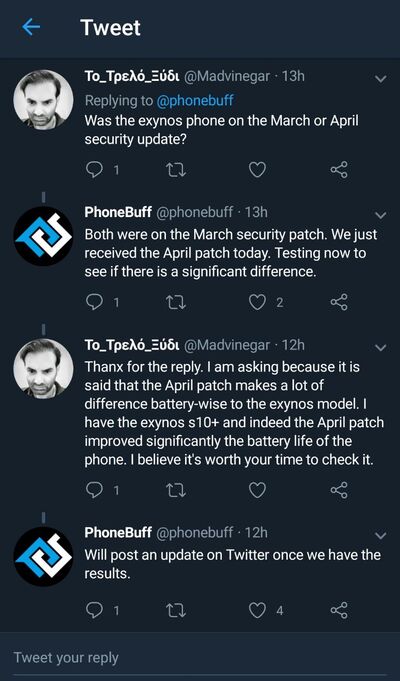
Based on this fact, the Exynos model certainly missed the idle Wi-Fi connection drain related fixes introduced in April update. Moreover, battery consumption due to cellular signal fluctuations were not considered in this experiment as the phones were almost static.
Nevertheless, PhoneBuff’s test once again proves that Samsung needs to tune their in-house silicons further. Contenders like Qualcomm’s Snapdragon and Huawei’s HiSilicon SoCs are killing the competition. The Exynos platform can only be used with Samsung branded phones, which is squeezing the market shares.

PhoneBuff is going to post an update to the initial test reports after installing the April update. Let me ask you meanwhile, do you think the Exynos Galaxy S10 is inferior than the Snapdragon model in terms of performance? Comment below.
PiunikaWeb is a unique initiative that mainly focuses on investigative journalism. This means we do a lot of hard work to come up with news stories that are either ‘exclusive,’ ‘breaking,’ or ‘curated’ in nature. Perhaps that’s the reason our work has been picked by the likes of Forbes, Foxnews, Gizmodo, TechCrunch, Engadget, The Verge, Macrumors, and more. Do take a tour of our website to get a feel of our work. And if you like what we do, stay connected with us on Twitter (@PiunikaWeb) and other social media channels to receive timely updates on stories we publish.

